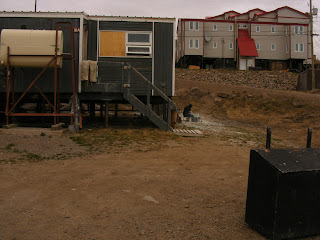Zoe Panchen
I am continuing my journey north next week, first to Resolute and then on to Lake Hazen in Quttinirpaaq National Park on Ellesmere Island. I seem
to have amassed quite an array of electronic gadgets to use while at Lake
Hazen. Some of the gadgets I will be using as part of my
research include:
GPS: I will use this to record the longitude,
latitude and elevation of the locations of the plants I am monitoring and also for the location of
herbarium specimens I collect.
Camera: On my twice weekly visits to each site, I will take photos of each plant
species I am monitoring to record their flower and fruit progression.
inReach: This is probably the neatest of the
gadgets I have. There is certainly no cell phone or internet coverage at a
place as remote as Lake Hazen so this device allows me to send text messages via
satellite. Here is how it works. I compose, send and receive text messages
using the Earthmate app on my iPad. The iPad communicates to the inReach device
via Bluetooth. The inReach sends and receives text messages from the Iridium
satellite system. The satellite system relays the text messages to the inReach
server. The inReach server notifies the recipient that there is a text message
for them to view at the inReach website. How cool is this? Watch out for txt
updates on the blog while I am at Lake Hazen!
Solar Battery Charger: The sun is weaker in
the Arctic because of its low angle and the rays having to travel further
through the atmosphere but the sun is up 24hrs/day in the summer at Lake Hazen
so plenty of time to charge my batteries and iPad.
2-way Radio: This is so I can communicate with the warden
station at Lake Hazen while I am out in the field each day.

.JPG)







.JPG)





.JPG)
.JPG)
.JPG)















.JPG)

.JPG)
.JPG)






